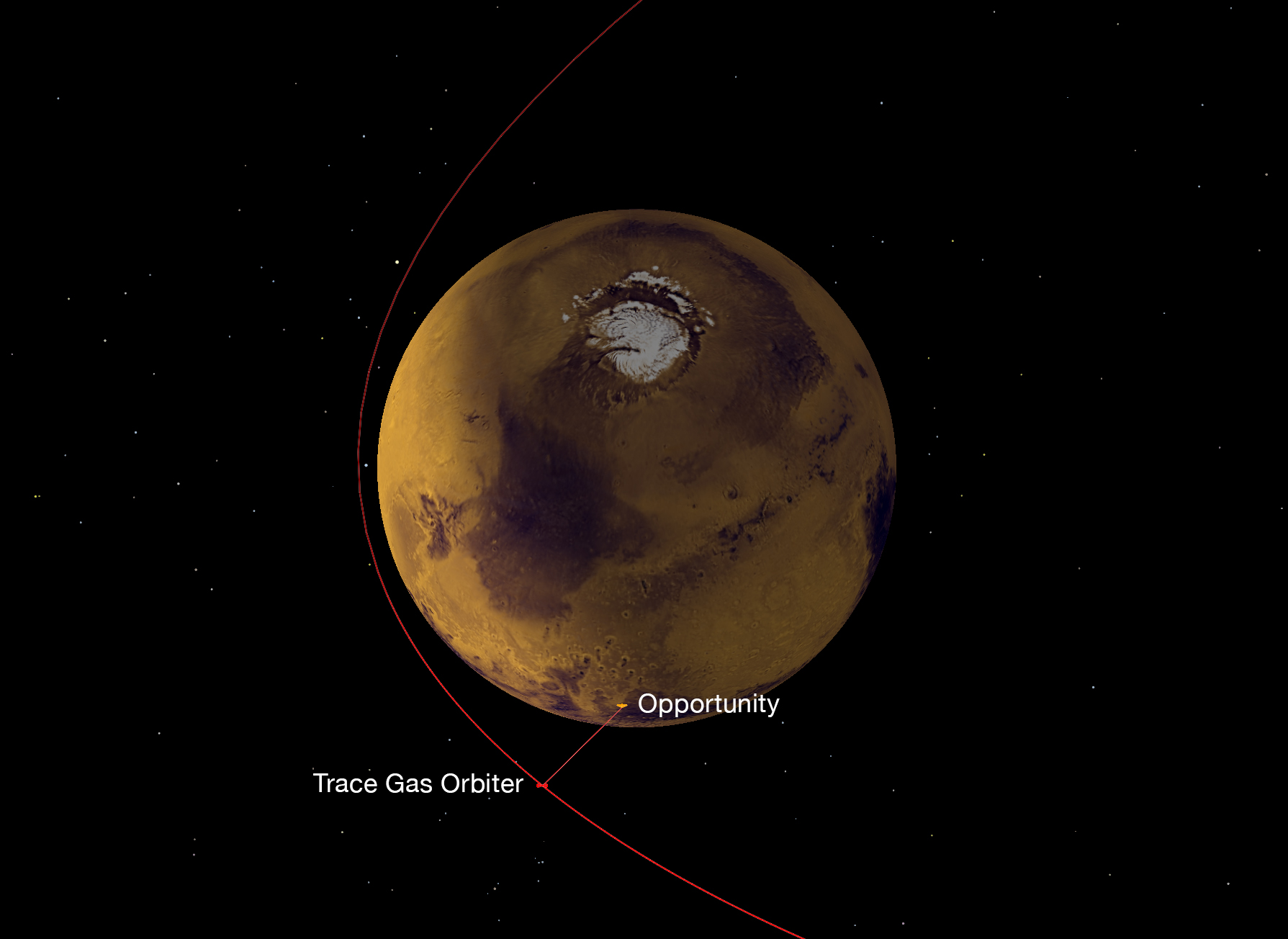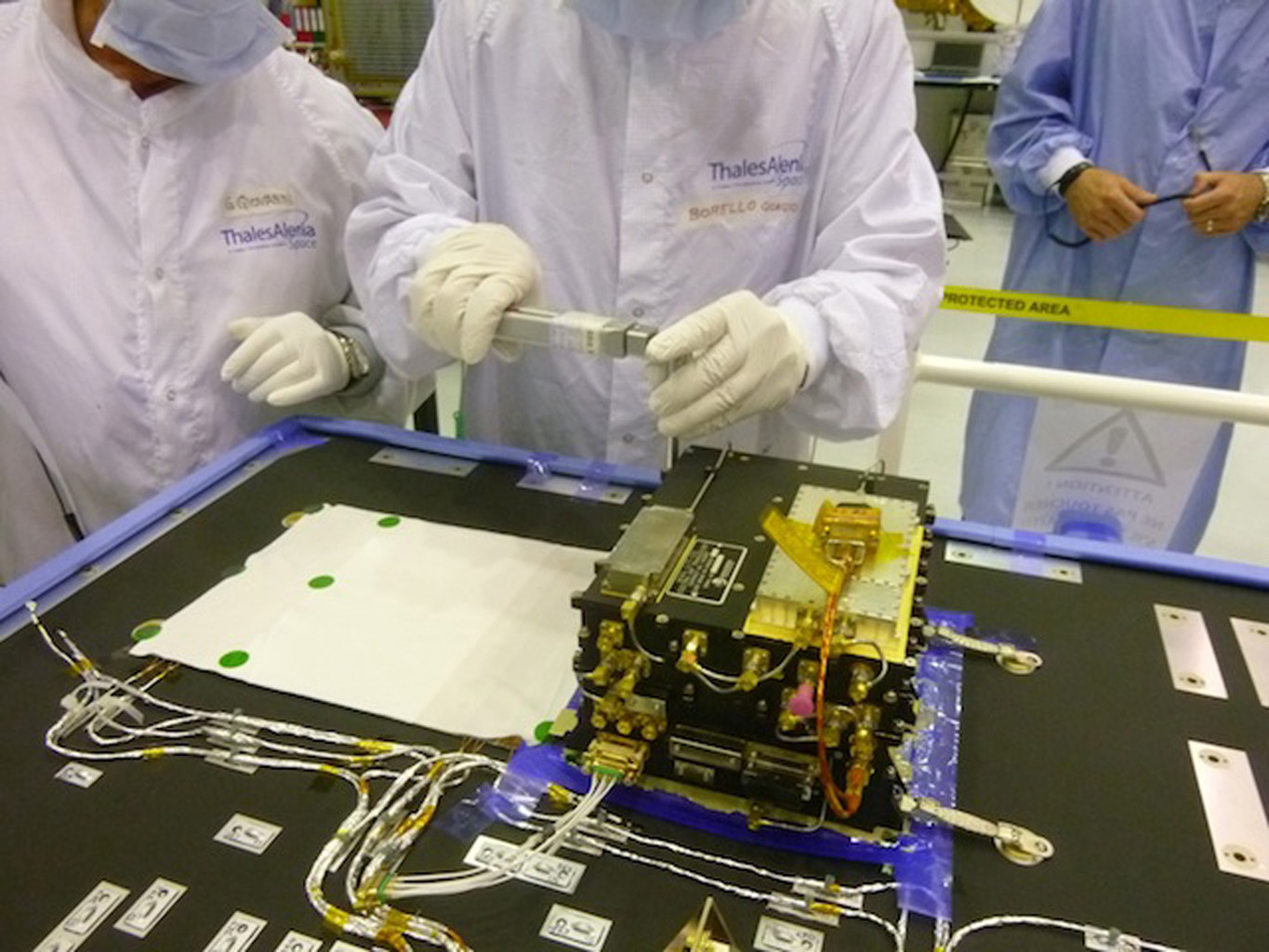

Data from each of the two rovers active on Mars reached Earth last week in the successful first relay test of a NASA radio aboard Europe’s new Trace Gas Orbiter (TGO).
The transmissions from NASA rovers Opportunity and Curiosity, received by one of the twin Electra radios on the orbiter on Nov. 22, mark a strengthening of the international telecommunications network supporting Mars exploration. The orbiter’s main radio for communications with Earth subsequently relayed onward to Earth the data received by Electra.
The European Space Agency’s (ESA’s) ExoMars/Trace Gas Orbiter reached Mars on Oct. 19, 2016. As planned, its initial orbit shape is highly elliptical, ranging from as far as 60,000 miles (98,000 kilometers) above the surface to less than 200 miles (less than 310 kilometers). Each loop takes 4.2 days to complete.
Frequent use of TGO’s relay capability to support Mars rover operations is planned to begin more than a year from now. That’s after the orbiter finishes adjusting its orbit to a near-circular path about 250 miles (400 kilometers) above Mars’ surface. Meanwhile, four other active Mars orbiters also carry radios that can provide relay service for missions on the surface of Mars. The two active rovers routinely send data homeward via NASA orbiters Mars Odyssey and Mars Reconnaissance Orbiter (MRO).
“The arrival of ESA’s Trace Gas Orbiter at Mars, with its NASA-provided Electra relay payload on board, represents a significant step forward in our Mars relay capabilities,” said Chad Edwards, manager of the Mars Relay Network Office within the Mars Exploration Program at NASA’s Jet Propulsion Laboratory, Pasadena, California. “In concert with our three existing NASA orbiters and ESA’s earlier Mars Express orbiter, we now have a truly international Mars relay network that will greatly increase the amount of data that future Mars landers and rovers can return from the surface of the Red Planet.”
NASA is on an ambitious journey to Mars that will include sending humans to the Red Planet. Current and future robotic spacecraft are leading the way and will prepare an infrastructure in advance for human missions.
The JPL-designed Electra radios include special features for relaying data from a rover or stationary lander to an orbiter passing overhead. Relay of information from Mars-surface craft to Mars orbiters, then from the Mars orbiters to Earth, enables receiving much more data from the surface missions than would be possible with a direct-to-Earth radio link from the rovers or landers.
“We already have almost 13 years’ experience using ESA’s Mars Express as an on-call backup for data relay from active Mars rovers, and TGO will greatly expand this to routine science-data relay,” said Michel Denis, TGO flight director at ESA’s European Space Operations Centre, Darmstadt, Germany. “In 2020, TGO will extend this relay support to ESA’s ExoMars rover and the Russian Surface Platform, an important capability together with its science mission that enhances the international data network at Mars.”
As an example of Electra capabilities, during a relay session between an Electra on the surface and one on an orbiter, the radios can maximize data volume by actively adjusting the data rate to be slower when the orbiter is near the horizon from the surface robot’s perspective, faster when it is overhead.
Curiosity and Mars Reconnaissance Orbiter already use Electra technology to relay data. NASA’s Mars Atmosphere and Volatile Evolution (MAVEN) spacecraft, in orbit since 2014, also carries an Electra radio.
Due to improvements in the newest Electra radios and reduced interference levels, TGO’s relay radios are expected to offer relay performance about double that of MRO’s Electra.
TGO’s main X-band radio uses a dish antenna 87 inches (2.2 meters) in diameter to communicate with Earth-based antenna networks operated by ESA, NASA and Russia.
JPL, a division of the California Institute of Technology in Pasadena, manages the Curiosity, Opportunity, MRO and Odyssey missions, and NASA’s role in the ESA ExoMars program for the NASA Science Mission Directorate, Washington.
For more about ESA’s ExoMars program, including TGO, visit:
http://exploration.esa.int/mars/
For more information about NASA’s journey to Mars, visit:


























